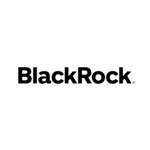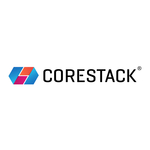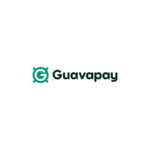Open banking: heroes wanted, apply within
Open banking… we’ve been talking about it for a while, haven’t we?

With open banking, the responsibility for education lies with everyone participating in the ecosystem
Opinion leaders talked about it with a lot of enthusiasm quite a few years ago… then stopped… then came back in the context of BaaS and embedded finance… then went away to play with ideas of the metaverse… then came back with OPEN EVERYTHING before they went off to talk about AI.
That is, of course, their job, their prerogative and the service they perform for the industry, but in the meantime… what has actually happened?
Well.
A lot of work has happened, for starters.
A lot of regulatory detail has been worked through… a lot of consultants have worked frantically on frameworks and roadmaps… and a lot of systems were upgraded, built and adjusted to ensure that organisations were at least compliant, if not exactly firing on all cylinders.
A lot has happened.
And yet not a lot has changed.
Some organisations have decidedly leant into it… others have sat on their hands and kicked their heels… a lot have treated it as a compliance requirement and did the bare minimum, which was neither bare nor minimal, but still it came with little creativity and no gusto.
Every year for what feels like 78 years I have found myself lamenting the fact that account aggregation seems to be the extent of the usefulness most financial services players have found for this… thing.
But that’s not actually accurate. Or fair.
Open banking is meant to have immense value for the consumer. And it can do.
The catch is that the consumer largely doesn’t know where to find, how to deploy and how to protect said value and, frankly, it is naïve and unfair to expect said consumer value to somehow manifest itself on its own… just like eating your vegetables is expected to be good for you in a definitive but non-specific way.
For businesses to lean into open banking beyond compliance and competitive parity, the value proposition has to extend to… well… themselves. The merchants and the FS providers. It needs to solve a problem or create an opportunity. Or, ideally, both.
And in jurisdictions where payments work largely well, the problem was not always burning… and the opportunity was dwarfed by other opportunities that seemed more real and relevant. So adoption has been slow and creativity low.
Meanwhile, the people who enthusiastically jumped into the open banking arena were challengers and new businesses that had vision and hope and VC money and followed the adage of ‘if you build it, they will come’… only the adage doesn’t specify when they will come, and whether it will be at a steady pace and in adequate numbers. And as the funding environment is set to stay constrained, those enthusiastic transformative players may be facing extinction at worst or a long winter at best.
That is undeniably sad for the people involved, but is it surprising? That adoption is slow and deliberate? That the first round of adoption isn’t the final shape of it all?
When we say something is a marathon and not a sprint, we don’t just mean the duration of the race, as NatWest’s Chief Payments Officer Mark Brant pointed out in a recent fireside chat with yours truly: we also mean that it entails a different kind of training, endurance and ability to keep going in what is an altogether different kind of race. That is part of the job at hand. Because this race isn’t over until the value proposition is self-explanatory to the consumer.
And Mark is right: good, strong value propositions don’t usually need annotation. So we have some ways to go still until the open banking value proposition is self-evident for consumers. We have some ways to go until the value is both present and clear.
Ultimately, this is about creating an environment where a range of valuable choices are available. And although we are well on our way, we are not quite there yet. And for that to happen, you need to meet the primary exam questions for your ecosystem: consumers want to be able to trust you. Merchants want certainty. Service providers want a commercial benefit.
It is fair to say that all those years on (I am assured it hasn’t been 78 years… but it definitely feels like it has), we are still learning and experimenting. The ecosystem has gotten bigger and more complicated. Everyone agrees that what we are looking for is something that is fair, simple, reasonably priced and yet allows for commercial upside for all participants.
We all agree that the intention here is consumer benefit.
We all agree that this is good for the consumer and can be good for the ecosystem.
But who is meant to champion adoption?
And who is accountable for consumer education?
Mark is adamant that the responsibility for education lies with everyone participating in the ecosystem. Not a single body, but all of us. Ultimately, if we focus on all the use cases where ‘open’ is the operative word, a lot of the clarity for accelerated adoption will drive itself.
I like that.
In fact, I would like that on a t-shirt.
And I like his commitment to the education part. Because he is speaking on behalf of an organisation with huge reach and a big part to play in this process.
I find myself less optimistic, though. Because I don’t hear all the players leaning in the same way.
I agree that the regulator will keep an eye on fairness… and the ecosystem participants will innovate in line with their commercial interests.
I like the idea of “Does this benefit from being more open?” being the ultimate filter for what should get our energy and resources for adoption.
I am just nervous that consumer protection is left to the personal ethics and goodwill of each organisation. Consumer duty is on everyone’s job description of course, but whether it will be delivered in a way that is patronising and paternalistic (I checked that for you, you are grand, don’t worry your pretty little head) or empowering and accessible feels too important to not lock down intentionally and a priori.
If this is, for me as a consumer, fundamentally for my benefit and protection… then bringing me to the table is non-negotiable. And that doesn’t and can’t mean that every consumer will be expected to get an MBA, but it has to mean that we find a way to communicate the options available and choices made in a way that is neither exclusionary nor patronising. And we need to make responsibility for this clearly apportioned even if it is widely shared (because I agree with Mark: it has to be widely shared).
Ultimately, whatever is loosely everyone’s responsibility ends up in that oh-so-familiar territory of everyone thought anyone could do it but nobody did what everyone could have done.
And this is way too important to be left to chance.
Open banking needs its heroes.
They don’t need a white steed, and they don’t need to be strong, fast or murderous. But they do need to take on the mantle of championing the consumer with consistency, integrity and more than a little creativity.
#LedaWrites
 Leda Glyptis is FinTech Futures’ resident thought provocateur – she leads, writes on, lives and breathes transformation and digital disruption.
Leda Glyptis is FinTech Futures’ resident thought provocateur – she leads, writes on, lives and breathes transformation and digital disruption.
She is a recovering banker, lapsed academic and long-term resident of the banking ecosystem.
Leda is also a published author – her first book, Bankers Like Us: Dispatches from an Industry in Transition, is available to order here.
All opinions are her own. You can’t have them – but you are welcome to debate and comment!
Follow Leda on X @LedaGlyptis and LinkedIn.











































I’d love to use more open banking features. It doesn’t help adoption that I’m still asked to renew my connection after 90 days (no longer a requirement?) or my questions about variable recurring payments or sweeping are met with “do you mean direct debit” replies from the chat bots of the banks that proclaimed they’d implemented vrp in 2022. Do you trust an auto balancer to not make you go overdrawn when there’s no guidance on the timescales?